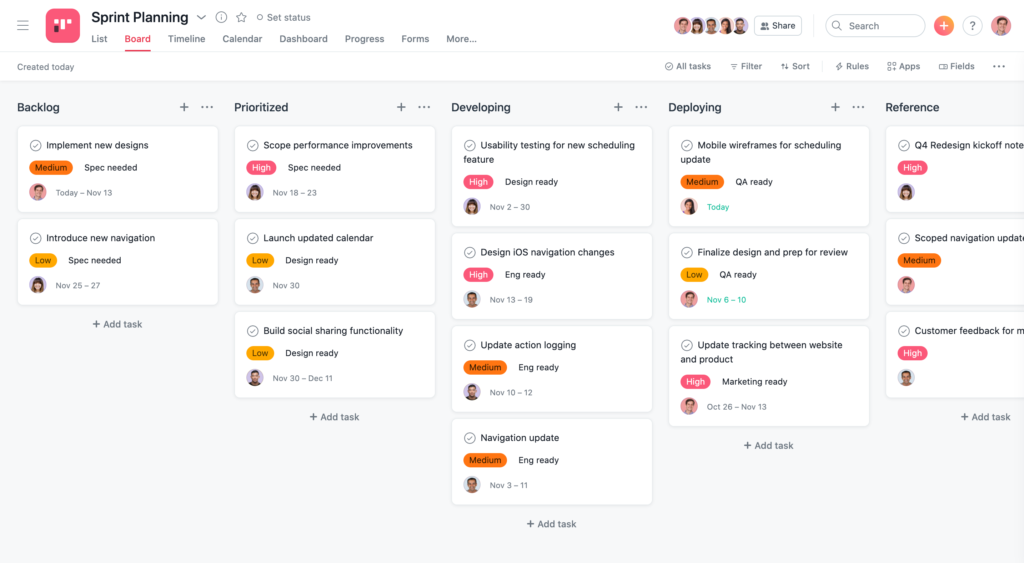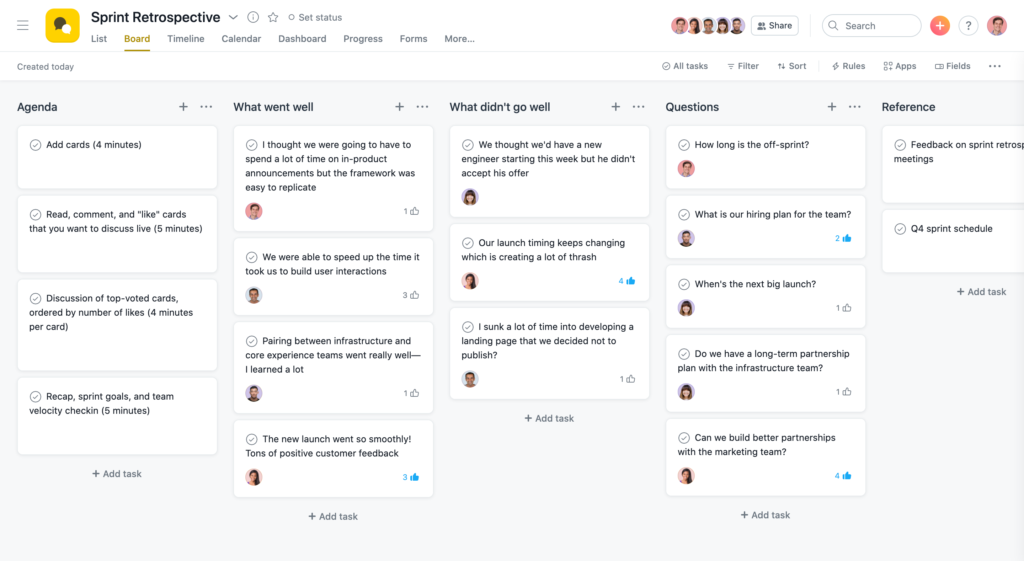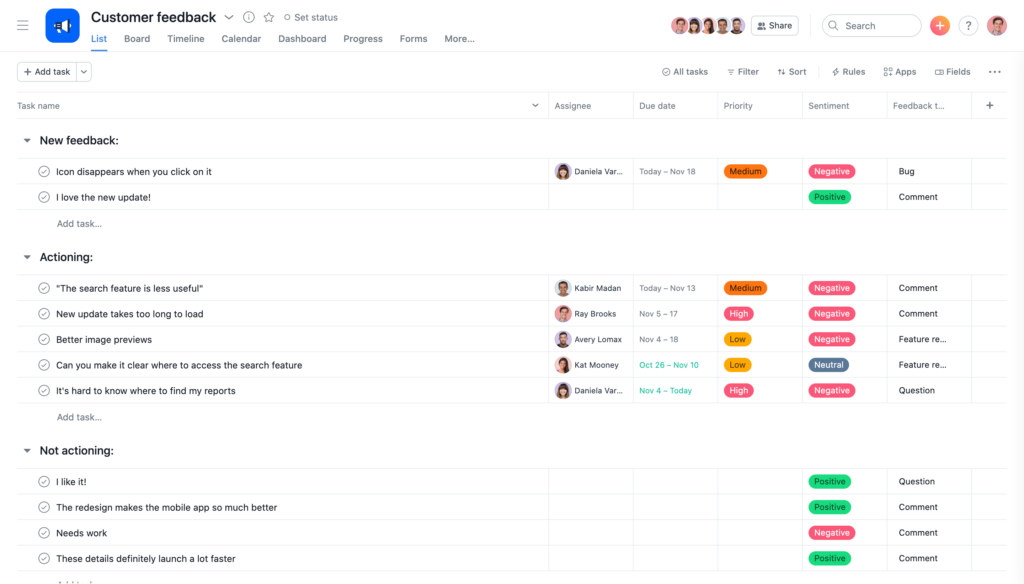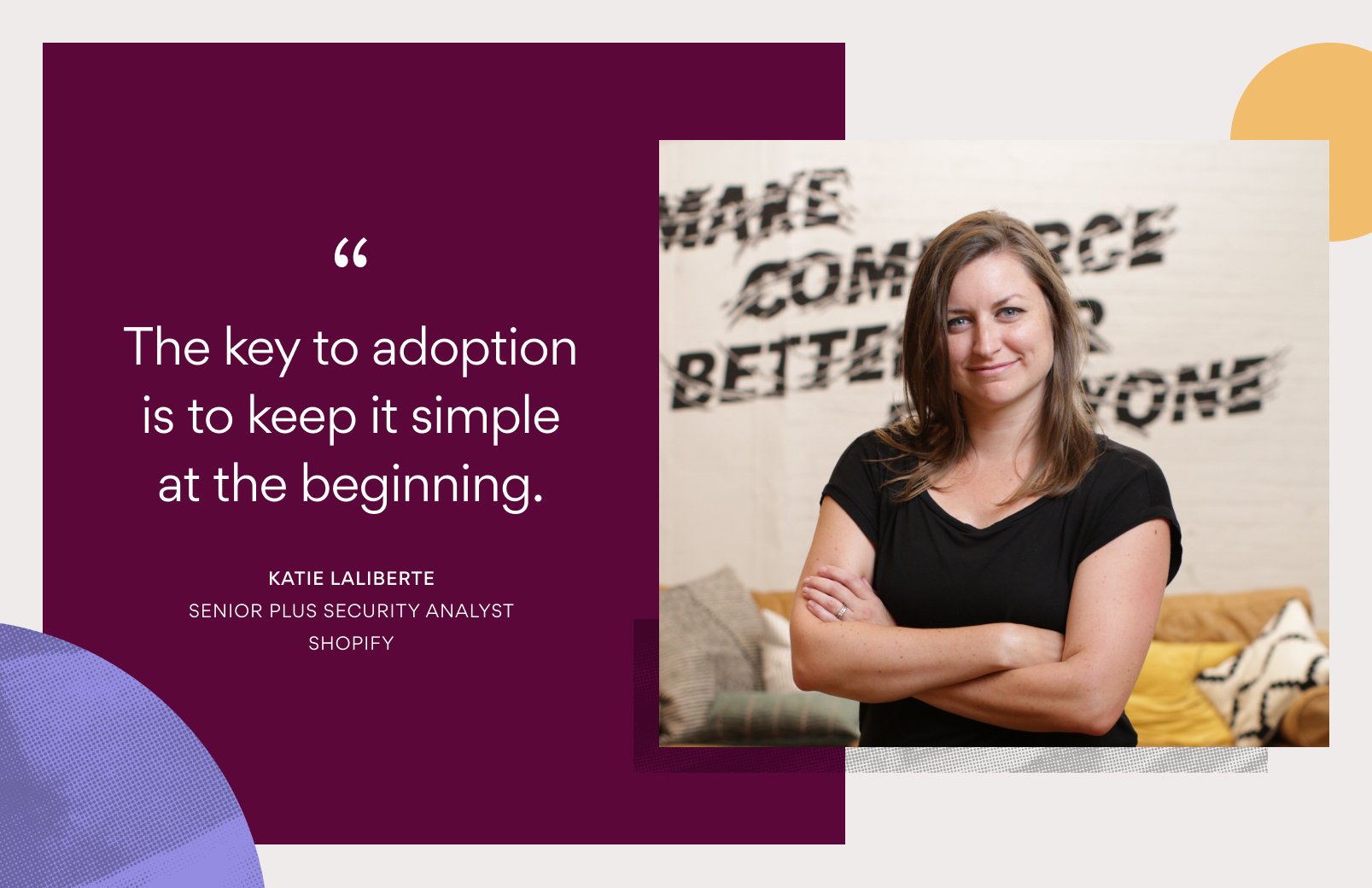Asana tips: 4 templates for managing an Agile team with Asana

Read this article in French, German, Portuguese, Spanish, or Japanese.
Did you know you can run an Agile team with Asana? Though Agile is a popular lean project methodology for product, engineering, and software development teams, any team can run Agile processes with Asana. Whether you’re building Kanban boards, running Scrum sprints, or using another Agile philosophy, try these templates to get your team started with Agile project management in Asana.
Sprint planning
Sprints are a common function of several Agile frameworks, including Scrum. In an Agile sprint, a team will spend a set amount of time—usually two weeks—working on a distinct project or body of work. That work is pulled from a backlog, and is traditionally tracked in a Kanban-style board view, like Asana Boards.

With our free sprint planning template, you now have an easy way to keep your team structured and share a single source of clarity with your entire team. To use our sprint planning template:
- Set up an intake form for new work requests, then easily add those tasks to your sprint planning template as well.
- Manage sprint capacity planning by adding a numeric custom field for how long each task should take.
- Automatically move work through stages with Rules.
💡Tip: If you’re on an engineering or software development team, you can also use our free bug tracking template.
Daily standup meetings
Most Agile teams schedule a daily standup for team members to share their priorities, brainstorm improvements, and stay up to date on important project announcements. With our free daily standup meetings template, your team can easily reference existing notes and create actionable follow ups.

Before setting up the project, decide with your team if you want to create Sections based on days of the week or dedicated to each employee.
- If you create Sections based on days of the week, create a task within each section for each team member (e.g. “Jake’s standup topics,” “Bianca’s standup topics”) and encourage team members to add details to the task before your meeting. Use the @-mention feature to reference tasks or tag cross-functional team members.
- If you create a Section for each employee, encourage team members to add relevant tasks from your sprint planning project to the daily standup meeting project. That way, everyone on the team can reference those tasks during the standup, or afterwards.
💡Tip: Track actionable meeting notes with subtasks.
Sprint retrospective
One of the most important parts of your sprint is the retrospective—the time when your team can get together to go over what went well, what can be improved, and how you can continue to evolve as a lean project management team. Our free sprint retrospective template makes it easy for you to collect insights and turn them into structured action items.

To use this template effectively:
- Create Sections for any relevant types of questions or feedback you hope to collect during your retrospective.
- Begin your sprint retrospective meeting with some hands-on working time. Encourage each team member to add tasks with feedback about what went well, what could be improved, and any open questions they have.
- Once each team member has had a chance to share, encourage them to go and read everyone else’s comments and “like” the ones they want to talk about as a group. Give everyone a few minutes to read and “like” tasks before discussing as a group.
💡Tip: Sort each Section by “likes” so the tasks with the most likes show up at the top of each section.
Customer feedback
You’ve shipped a new feature, product, or bug fix—now what? One of the core tenets of Agile teams is continuous improvement, but teams can’t improve if they don’t know what’s working and what isn’t. Customer feedback is an invaluable tool for determining how your team can continue improving and evolving—but it has to contain the right information.

To ensure your team is getting the right level of detail, you can collect and store feedback with our free customer feedback template. For best results:
- Create a Form for customers to submit feedback and use Forms branching to make sure customers only answer relevant questions. Alternatively, integrate your most important customer feedback tools, like Zendesk. Then, automatically create tasks in Asana from new Zendesk tickets.
- Create a custom field to track whether or not a piece of feedback needs a response—and who to contact if it does.
💡Tip: Just because you’re collecting customer feedback doesn’t mean you have to action on every bit of it. Create a Section for important feedback you’re not actioning right now, so you can still capture and refer to that information in the future, if necessary.
Move fast and build things
To effectively manage an Agile team, you need a tool that’s just as fast, flexible, and collaborative as your team. When your team shares a central source of truth, you can ship more, faster—without breaking anything.
For more tips about how to use Asana for Agile, read our guide.

